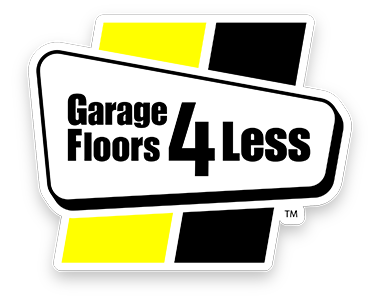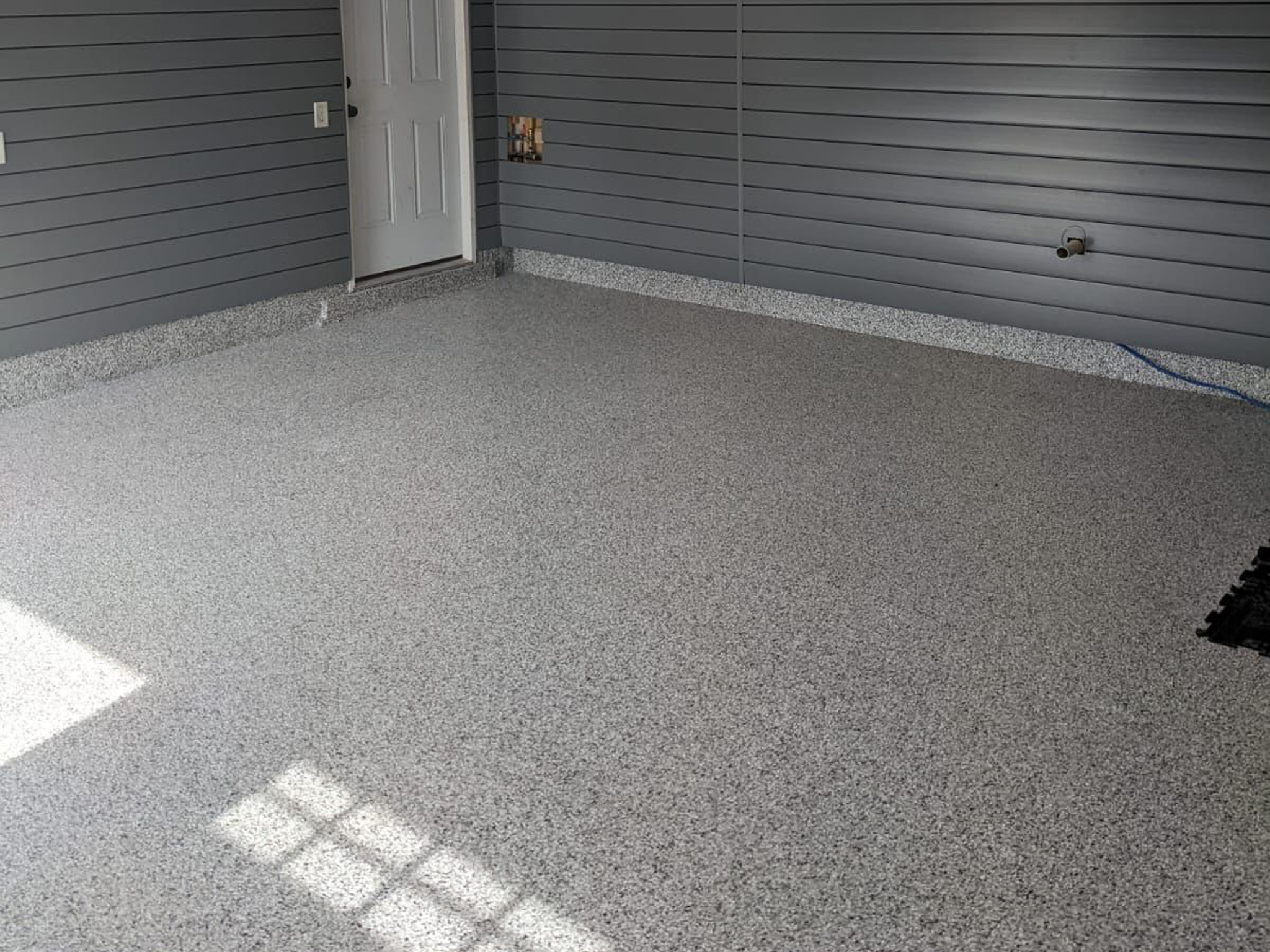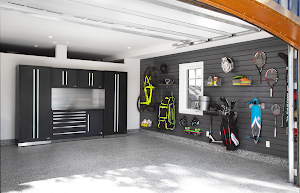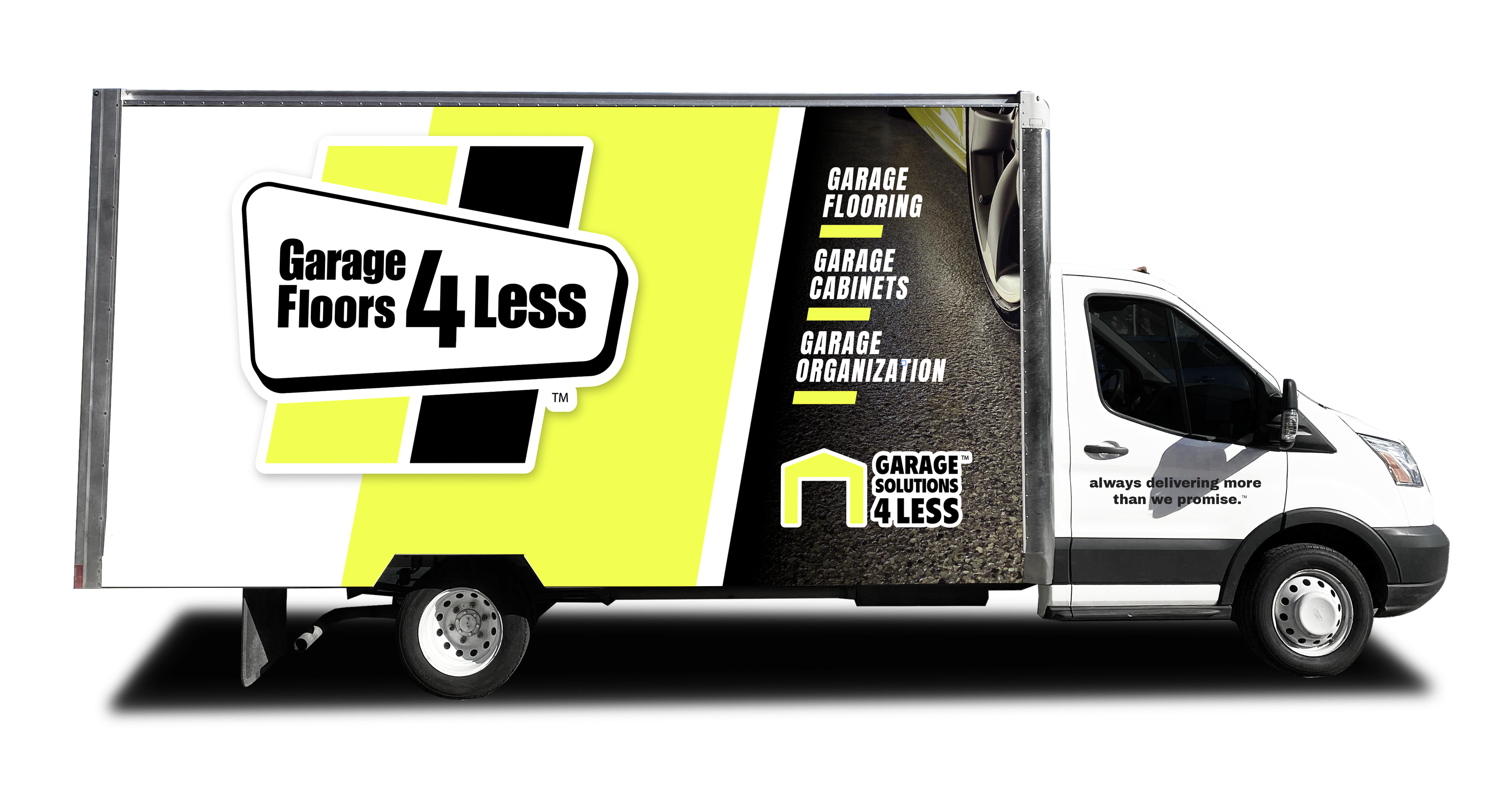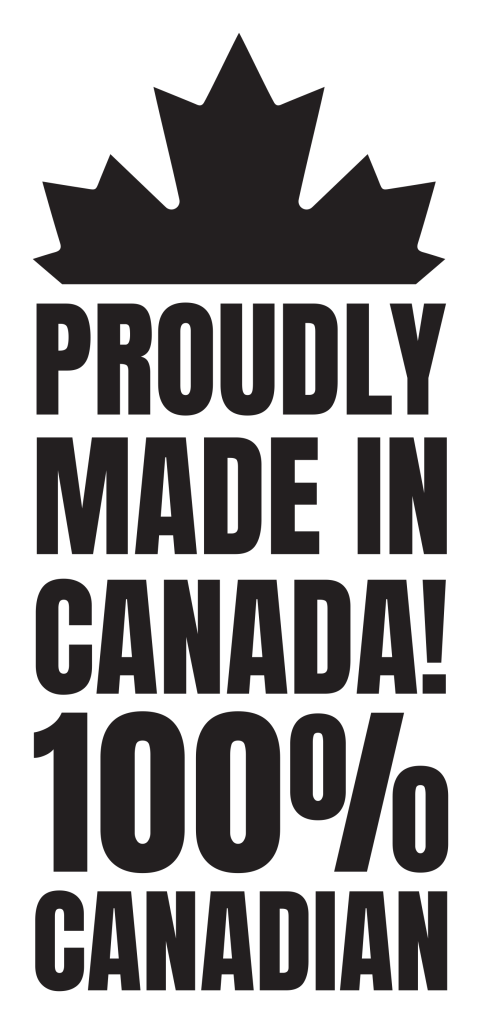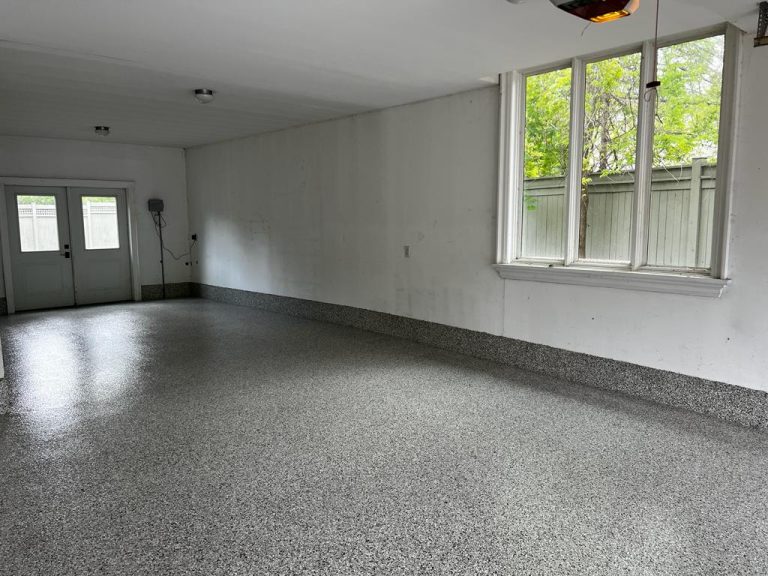
One effective method to rectify a scratched epoxy floor and decrease the likelihood of future blemishes resurfacing is through the process of sanding and applying a Urethane coating to the flooring surface. By engaging in this particular approach, you can effectively address the issue at hand and significantly reduce the chances of the scratches reappearing over time.
Step 1: Remove Dust and Dirt from Your Epoxy Floor
Combine liquid soap and water in a bucket, blending them harmoniously. Proceed by employing either a gentle brush or a supple sponge to thoroughly eliminate every speck of dirt and dust from the floor’s surface. Employ circular motions, working diligently until the floor achieves a pristine, crystal-clear appearance. Remove any lingering foam by rinsing it away with a soft cloth, leaving behind a residue-free surface. Finally, allow the floor to naturally air-dry, embracing its renewed cleanliness.
Step 2: Restore Shine to Affected Areas of the Floor
To address minor scratches, take a dry cloth along with a polish that corresponds to the epoxy used. In gentle and equal motions, delicately apply the polish onto the scratches, working diligently until they vanish from sight. Aim for consistency in your motions to achieve the desired result.
In the case of deep scratches, a different approach is necessary. Utilize sandpaper to gently rub the surface affected by the scratches. Be cautious and mindful of the pressure applied, aiming for a careful and measured approach. By doing so, you can gradually smooth out the surface and reduce the visibility of the deep scratches.
Step 3: Achieve a Smooth Surface through Sanding or Buffing
The Sanding Process
Prepare a solution of soapy water by mixing soap and water, ensuring a suitable concentration. Transfer the solution into a spray can for ease of application. Begin by wetting the scratched areas using the soapy water solution. Take a sheet of fine-grit sandpaper and wet it as well to create a lubricating effect.
With the wet sandpaper, gently rub the scratched areas, maintaining a consistent and even pressure. It is crucial to keep the area wet throughout the entire sanding process. Continuously wet the surface with the soapy water solution to prevent excessive friction and to facilitate smoother sanding.
Persist in rubbing the scratched areas until the distinction between the previously scratched region and the surrounding epoxy becomes indistinguishable. This indicates that the sanding process has successfully minimized or eliminated the visible scratches.
Once satisfied with the sanding outcome, rinse the sanded areas thoroughly to remove any residue. Then, proceed to wipe the surface clean, ensuring all debris and excess water are removed. Allow the sanded areas to air-dry completely, promoting optimal drying conditions.
The Buffing Process
Before proceeding with buffing, ensure that the surface is thoroughly clean and dry. This helps to create an optimal environment for the buffing process.
Once the surface is ready, apply an appropriate amount of polish onto the affected area. Be mindful not to use excessive or insufficient polish. Finding the right balance is crucial for achieving the desired outcome.
With the polish applied, begin rubbing the affected area in gentle circular motions. This circular motion helps distribute the polish evenly and facilitates the blending of the scratched area with the surrounding epoxy. Continue the circular rubbing motion until the scratch gradually disappears from view.
In the event that certain scratches prove to be more challenging, periodically switch to different sandpaper grits. This allows for a more tailored approach in addressing those difficult scratches. By adjusting the sandpaper grit, you can effectively adapt to the specific needs of each scratch.
Once the buffing process is complete, consider applying a protective coating to the epoxy surface. This coating serves as a safeguard against future scratches, preserving the integrity of the surface for a longer duration.
Step 4: Enhance the Floor’s Appearance with Polishing and Coating
After successfully removing the scratches and achieving a smooth surface, the next step is to polish the epoxy floor to restore its original shine and seamlessly blend in the sanded areas.
Using a suitable polish for epoxy flooring, apply it evenly across the entire floor. Ensure that you follow the manufacturer’s instructions regarding the amount of polish to use. Apply enough to cover the surface, but avoid applying an excessive amount that could lead to uneven results.
With the polish applied, use a clean cloth or a buffing machine to work the polish into the floor, using circular motions. This process helps to distribute the polish evenly and enhances the glossy appearance of the epoxy.
Continue the polishing process until the entire floor achieves a consistent shine, including the previously sanded areas. By doing so, you can ensure a uniform and seamless look across the entire surface.
To provide additional protection against future scratches, consider applying a urethane topcoat to the entire floor. Urethane is known for its durability and resistance to scratching. This topcoat acts as a barrier, safeguarding the epoxy floor from potential damage while maintaining its aesthetic appeal.
Follow the instructions provided by the urethane topcoat manufacturer, ensuring proper application techniques and recommended drying times. By coating the entire floor with a urethane topcoat, you can enjoy the benefits of added scratch resistance without compromising the visual attractiveness of the epoxy flooring.
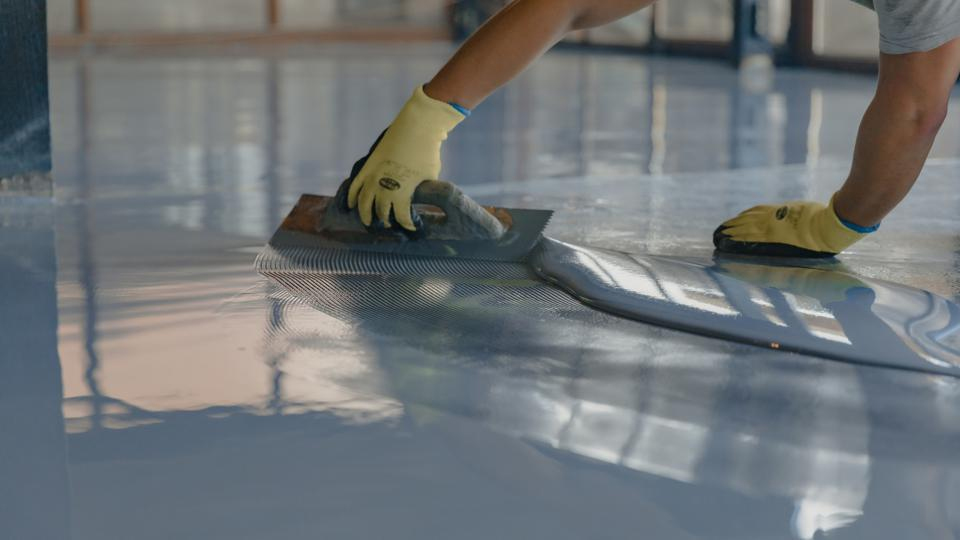
Understanding the Causes of Scratches on Epoxy Flooring
Due to its relatively hard nature, epoxy flooring is susceptible to scratching when subjected to the friction of abrasive tools. To minimize the risk of scratches, it is advisable to avoid dragging heavy furniture and objects across the surface unless proper protective measures, such as rubber guards, are utilized.
When moving or repositioning heavy items on the epoxy floor, take care to lift them instead of dragging them directly. This lifting technique helps to prevent direct contact between the abrasive edges or rough surfaces of the furniture and the floor, reducing the likelihood of scratches.
Alternatively, if dragging heavy objects becomes necessary, consider placing rubber guards or protective pads underneath the furniture or object’s contact points. These rubber guards act as a cushioning layer, creating a buffer between the object and the epoxy floor. This protective barrier helps to minimize friction and prevent scratches.
By being cautious and employing preventive measures such as avoiding dragging heavy items and using rubber guards, you can significantly reduce the risk of scratches on your epoxy flooring. This proactive approach helps to maintain the integrity and appearance of the floor over time.
Exploring the Advantages of Epoxy
Epoxy flooring possesses a range of advantageous properties, including:
High Strength: Epoxy flooring exhibits excellent strength and durability, making it highly resistant to impacts, heavy foot traffic, and mechanical stress. It can withstand the weight of heavy objects and equipment without cracking or deforming easily.
Chemical and Solvent Resistance: Epoxy flooring is highly resistant to various chemicals, solvents, and corrosive substances. It can withstand exposure to oils, acids, cleaning agents, and other chemicals commonly found in industrial or commercial settings without suffering significant damage or staining.
Low Toxicity: Epoxy flooring is known for its low toxicity levels, making it a safe choice for both residential and commercial environments. It emits minimal volatile organic compounds (VOCs) during installation and does not release harmful fumes or odors once cured.
Effective Electrical Insulation: Epoxy flooring possesses excellent electrical insulation properties, providing a non-conductive surface. This feature is particularly beneficial in industrial or laboratory settings where electrical equipment or sensitive electronics are present. The epoxy coating helps to prevent electrical shock hazards and ensures a safe working environment.
Varieties of Epoxy Floor Coatings
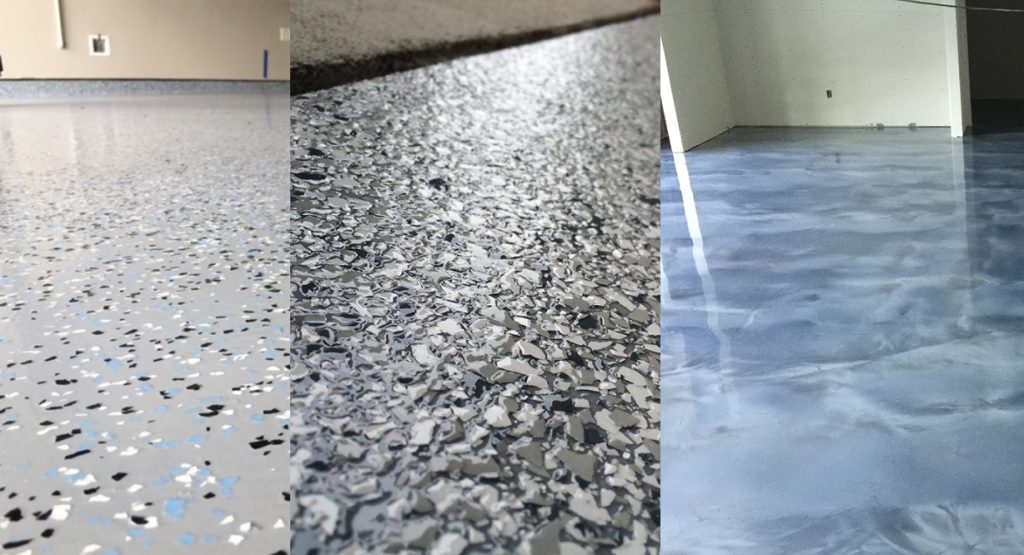
Epoxy floor coatings have gained significant popularity due to their exceptional durability, versatility, and aesthetic appeal. These coatings provide a protective and visually appealing surface for various residential, commercial, and industrial applications. With a wide range of options available, each tailored to specific needs and requirements, epoxy floor coatings offer a versatile solution for enhancing the durability and aesthetics of floors.
Self-Leveling Epoxy Coatings for a Smooth Finish
Epoxy coatings are extensively utilized in diverse settings, including kitchens, bathrooms, dining rooms, warehouses, office buildings, garages, and more. Their remarkable attributes provide a seamless, waterproof, and enduring surface that effectively withstands heavy foot traffic, chemical exposure, stains, and general wear and tear. Particularly, self-leveling epoxy coatings are commonly applied in thin layers, allowing for effortless customization with an array of colors, textures, and finishes to suit various aesthetic preferences.
Moreover, self-leveling epoxy can be seamlessly integrated with other flooring materials like tile, carpet, and linoleum, allowing for creative combinations and design possibilities. Although the installation cost of self-leveling epoxy may be higher compared to traditional floor coverings, its exceptional durability ensures a remarkable return on investment in the long run. By choosing self-leveling epoxy, one not only achieves a visually appealing and customizable flooring solution but also secures a resilient and long-lasting surface capable of withstanding the demands of everyday use.
Epoxy Mortar Coatings for Robust Floor Protection
Epoxy mortars have gained popularity as a favored floor coating option for both commercial and residential buildings. Comprising a two-component epoxy system consisting of a base material and a hardener, epoxy mortar is applied in thin layers to concrete or other substrates. Its primary purpose is to seal and protect floors from water, chemicals, and various contaminants.
The robust nature of epoxy mortars makes them highly resistant to abrasion, scratches, and water damage, resulting in a strong and durable surface that requires minimal maintenance. Their versatility allows for application in a wide range of settings, including garages, warehouses, industrial buildings, and diverse commercial and residential areas.
Beyond their protective attributes, epoxy mortars serve multiple functions, such as waterproofing, chemical resistance, and decorative enhancements. They offer a spectrum of colors and textures, allowing for customization to meet specific requirements in various applications. Epoxy mortars are available in different grades, including self-leveling, semi-leveling, and textured applications, catering to specific project needs.
The application process typically involves two or three coats of epoxy mortar, depending on desired performance and the desired finish. After application, the epoxy mortar requires a curing period of several hours before it is fully ready for use. The specific curing time may vary depending on factors such as temperature, humidity, and the type of epoxy mortar used.
Epoxy mortars provide an effective and reliable flooring solution that combines practicality, durability, and aesthetics. With their ability to withstand demanding environments and provide long-lasting protection, epoxy mortars have become a popular choice for both functional and visually appealing flooring surfaces.
Epoxy Flooring With Flakes
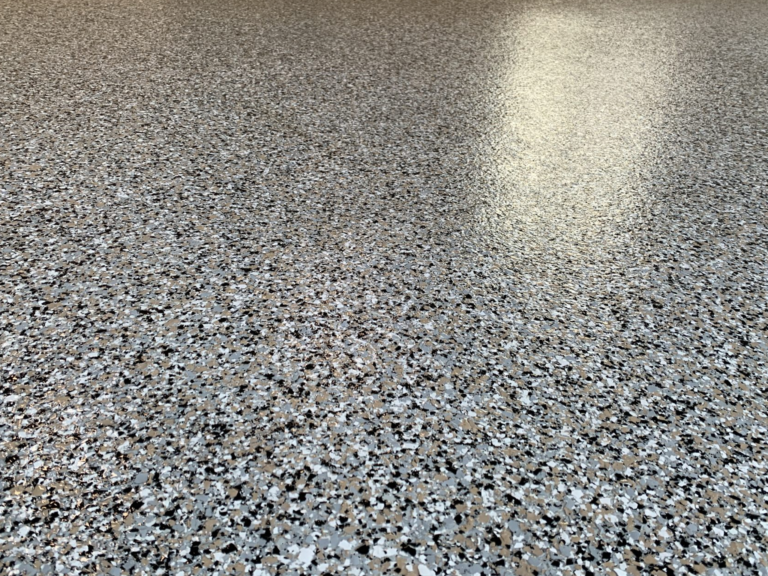
Epoxy flake floor coatings have emerged as a popular epoxy application method, particularly for commercial and industrial environments. These coatings offer exceptional durability and require minimal maintenance, making them an ideal flooring solution with long-lasting benefits.
The foundation of epoxy flake floor coatings lies in a robust and waterproof epoxy material. During the application process, small chips of colored flakes are incorporated into the wet epoxy coating, resulting in a distinctive and decorative finish. This infusion of colored flakes adds a unique touch to the floor, enhancing its aesthetic appeal.
Aside from their visual charm, epoxy flake floor coatings boast impressive practical features. They are easy to clean and maintain, reducing the effort and time required for upkeep. Moreover, these coatings provide superior protection against everyday wear and tear, ensuring their longevity in high-traffic areas.
Another advantage of epoxy flake floor coatings is their resistance to staining. This attribute makes them suitable for installation in areas where water and moisture may be present, such as kitchens, bathrooms, or other moisture-prone environments. The epoxy material creates a protective barrier that prevents stains from penetrating the surface, maintaining the floor’s pristine appearance.
To further cater to various design preferences, epoxy flake floor coatings offer a wide range of options in terms of color, pattern, and texture. This versatility allows for customization, enabling the creation of visually appealing flooring solutions that align with specific design aesthetics or branding requirements.
Distinguishing Epoxy Flooring from Epoxy Coating
While both epoxy flooring and epoxy coating involve the use of epoxy resins, they serve different purposes and are applied in distinct ways.
Epoxy flooring refers to a complete flooring system that is installed directly over a concrete or other suitable substrate. It involves the application of multiple layers of epoxy resin, typically combined with various additives, such as pigments, fillers, or decorative flakes. The layers are built up to create a durable, seamless, and visually appealing surface. Epoxy flooring is known for its excellent durability, resistance to chemicals and stains, as well as its ease of maintenance. It is commonly used in commercial, industrial, and residential settings where a high-performance and decorative flooring solution is desired.
On the other hand, epoxy coating refers to a protective layer that is applied to an existing substrate, such as concrete, metal, or wood, to provide enhanced durability, waterproofing, and chemical resistance. Epoxy coatings are typically thinner compared to epoxy flooring and are primarily used to create a protective barrier against moisture, chemicals, and abrasion. They can be clear or tinted and are often applied to surfaces like garage floors, industrial floors, and concrete countertops. Epoxy coatings offer an effective way to enhance the longevity and performance of a substrate while providing a smooth and easy-to-clean surface.
Epoxy Floor Coatings From Garage Floors 4 Less
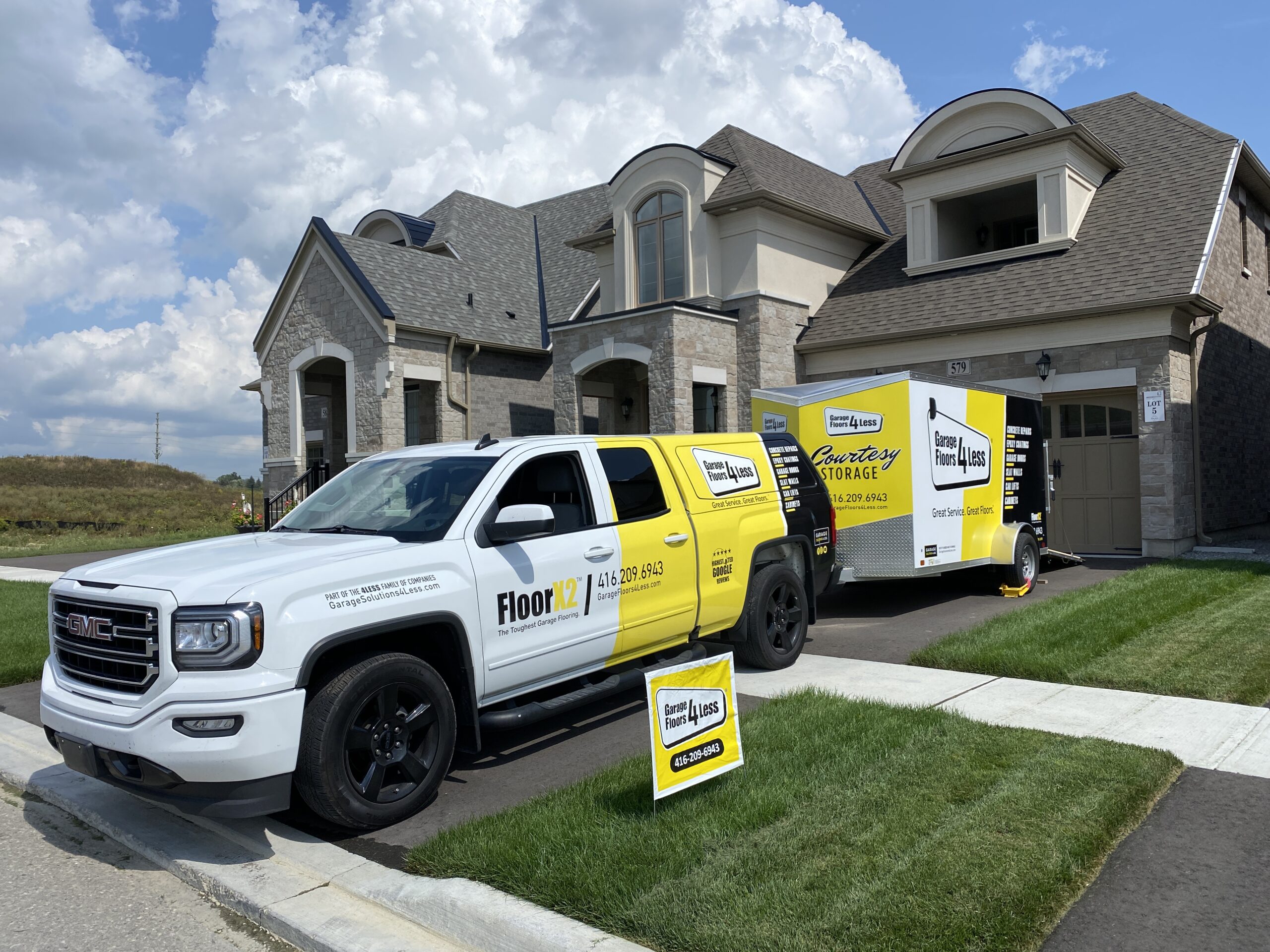
At Garage Floors 4 Less, our team of professionals is ready to provide expert diagnosis and solutions for any scratches or damage on your epoxy floor. With our extensive experience in epoxy flooring, we understand the unique challenges that can arise and are equipped with the knowledge and tools to address them effectively.
When you entrust us with diagnosing the scratches on your epoxy floor, our skilled technicians will conduct a thorough assessment of the affected areas. We will carefully examine the extent of the damage, taking into account factors such as the depth of the scratches and the specific epoxy coating used. This detailed evaluation allows us to determine the most appropriate course of action to restore your floor to its original condition.
Once the diagnosis is complete, our professionals will provide you with a comprehensive solution tailored to your specific needs. Whether it requires spot repairs, buffing and polishing, or a complete recoating, we will recommend the best approach to address the scratches and ensure a seamless, beautiful finish.
At Garage Floors 4 Less, we pride ourselves on delivering exceptional customer service and top-quality workmanship. Our team is committed to using high-quality materials and industry-leading techniques to achieve outstanding results. We understand the importance of a flawless epoxy floor and will work diligently to restore its appearance and functionality.
Contact Garage Floors 4 Less today and let our professionals diagnose and resolve the scratches on your epoxy floor. Trust us to provide the expertise and solutions you need to maintain a pristine and durable surface that will withstand the test of time.
